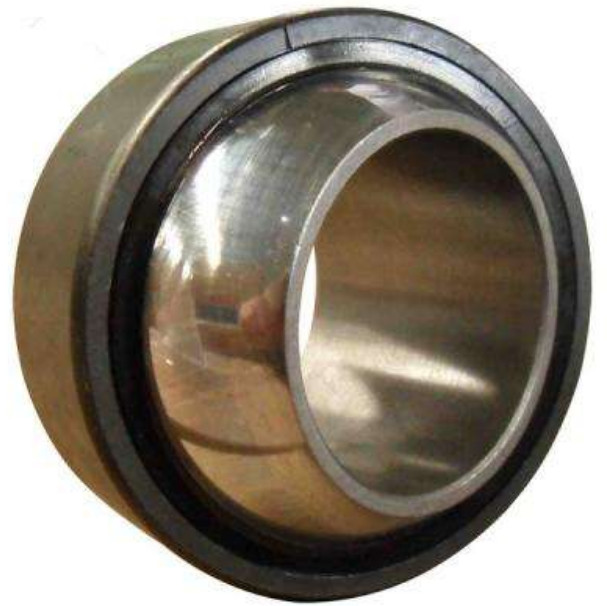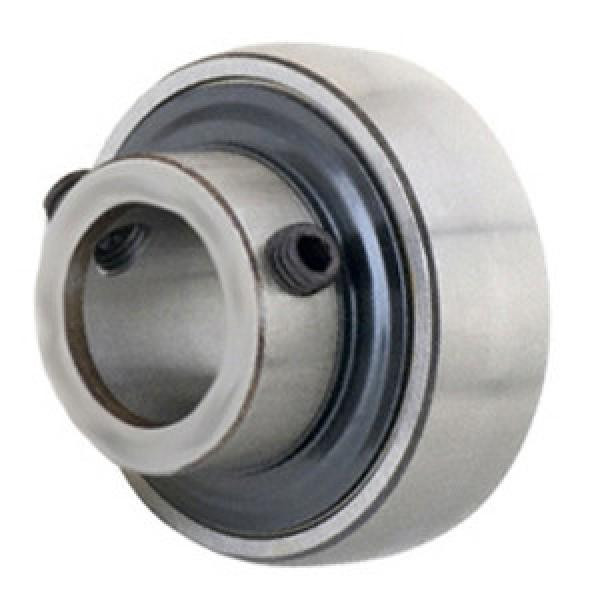Plain Bearing design reference

1 .1 internal preload
The main function of the Plain Bearing internal pressure spring is to maintain the self-aligning performance of the bearing in the radial direction relative to the plastic bearing housing. Once the bearing finds its center of operation, the compression spring will maintain this position for the life of the system. The design of the compression spring in the Plain Bearing also determines the amount of centering force required and ensures the static friction between the bearing and the plastic housing. If the force of the bearing drag is much greater than this static friction, the entire bearing will rotate in the bearing housing, but there is no relative movement between the inner and outer rings. This condition often causes channel wear, excessive heat generation, and significantly reduces bearing life.
1 .2 External preload
If the external preload applied to the Plain Bearing system is insufficient, excessive slippage may occur between the bearing inner ring and the clutch diaphragm spring fingers. Tests have shown that the Plain Bearing system, which is conventionally designed with control levers, not only wears out on its contact surfaces, but also sometimes squeaks when the preload is insufficient. At the same time, the sliding between the plastic housing and the lever also wears out its contact surface, directly limiting the life of the Plain Bearing system. Conversely, if the external preload is too high, the clutch diaphragm spring fingers may be embedded inside the rim, although this does not have any detrimental effect on the performance of the clutch release bearing, but attention should still be paid.
The external preload of the bearing is determined by the design method of the motor vehicle manufacturer and the main requirements of the clutch and separation system design. On the other hand, a suitable external preload should also take into account all the influencing factors relative to the application details through the system integration method.
1 .3 Interaction of Plain Bearing Control Rods and Bearings The development of clutch release bearings for plastic housing materials has led to a detailed study of the dynamic interaction between the Plain Bearing control lever (fork) and Plain Bearing. In the conventional clutch disengagement system, when the clutch is engaged, the crown contact area of the Plain Bearing lever slides along the rear of the bearing, which produces an eccentric force on the bearing and causes the clutch release bearing to tilt on the guide tube to increase wear. Finally, there is an unstable operation and an adverse effect that must increase the force of pedaling. If the crown contact surface is relocated from the clutch release lever to the clutch release bearing housing, then the contact point will move with the bearing during clutch engagement. This characteristic allows the engagement force to be transmitted directly to the geometric center of the bearing, essentially All the tilting moments are eliminated.
1 .4 inner ring rotation
Through the analysis of the geometrical characteristics of the angular contact bearing, the contact angle of the separation bearing is a function of the ratio between the diameter of the contact point of the inner ring and the diameter of the contact point of the outer ring. In addition, the angular contact type Plain Bearing is most suitable for the form of the fixed outer ring and the inner ring. The mode of rotation relative to the fixed inner and outer rings can significantly increase the life. Another advantage of using inner ring rotation is that it can diffuse the grease range. In Plain Bearing, if the rolling element has no sliding rolling along the raceway, the trend of the angular velocity contact area of any set of rings can be obtained according to the given rotational speed, and the outer ring rotation has the tendency to centrifugally move the grease from the storage cavity to the outside. This may cause the rolling element to wear in contact with the inner ring due to lack of oil, and cause the lubricating oil film to be broken, resulting in premature failure.
